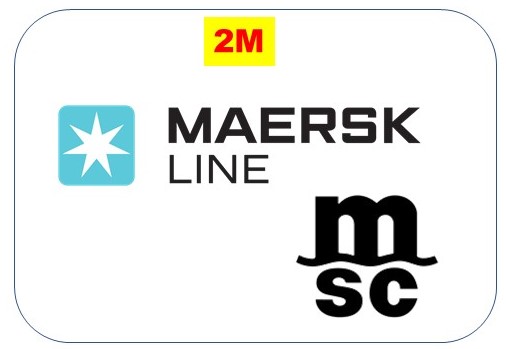During casual talks some shippers mentioned about the issue of New Alliances vs Dangerous Goods Acceptance stating they are now facing increasing difficulties in getting acceptance from lines after these alliances came into effect from 1st April 2017.
Vikas Singhal of Gulbrandsen Chemicals says “Shippers are facing problem with new Alliance. Apart from freight going up in North, shippers are facing difficulty in getting hazardous approval. Due to Alliance, few carriers are ready to carry the cargo but others refuse, resulting in either early shipping or miss the sailings. In both the cases, we have dissatisfied customer at the end and our supply chain time increases drastically. Also, few ports don’t accept particular class of cargo due to which shippers are left at the mercy of the carriers. In my opinion, if carriers are forming new alliances for the betterment of the profit margins, the alliance should also look for common rules which is beneficial to shippers.”
Why this difficulty?
In alliance trade one line may accept a particular dangerous goods from port A to B but other line who has to carry from port B to C may have prohibited the said cargo in their own house rule. Another issue is that the vessel sailing this week may accept the goods but same goods may be rejected by the vessel sailing next week due to differing house rules of respective line. The issues of difficulties in getting dangerous goods acceptance in the new scenario is mainly an old issue aggravated by the new alliances.
Who are the parties to these three alliances?
According to the article “ The impact of Alliance on smaller shipping lines” written by Hariesh Manaadiar the three alliances joins all top 10 container lines and 14th largest, K-Line, taking the lion share of 71% of global container market share. What is remaining to others? 22% which are not of the top 10 lines.
If we really consider the sailing patterns the three behemoths spread their tentacles over 96% of all east west trade lanes.

Way out
As long as there’s considerable differences in individual house rules for dangerous goods and the alliances take over large trade lanes shippers will find it difficult to get their DG bookings accepted from origin to destination.
What is your experience?
Have you experienced or started experiencing difficulties in getting dangerous goods accepted with the new alliances as compared to past? You are welcome to share your experience in the comment field below.



 WhatsApp your queries
WhatsApp your queries
Shashi, good morning. Am just curious: in yr upper left graph you show the Maersk + MSC vessels’ count at 200-someting. Unless mistaken, the Maersk Line has 600+ vessels for itself only… Am I misreading your graphs somehow?
Brgds,
Nikolai.
Hello Capt. Nikolai, You are right, MSK alone got 600 odd vessels but in 2M alliance the vessels are 223 in total, other vessels sailing out of this alliance. Same applies to other alliances combined number of vessels vs vessels sailing within alliance.
Regards/Shashi
Hello Shashi, Yes we are facing problem for DG acceptance by vessel and port.
port Klang , HK not allowing DG transhsipment and only option is VIA Singapore where freight is more and DG charges.
since we shipping class 2.3 cargo, we have very few option of shipping line because most of them denied for class 2.3.
MSK charges USD 5000-10000 as HAZ charges for class 2.3.
Dear Anil, Can understand the frustration of shippers with limited options for certain cargoes when certain ports and shipping lines raise their restriction levels. We cannot challenge it as it is their commercial decision basis quantitative risk analysis. However, if you an sit across with sales team of shipping line with all your data pertaining your good manufacturing practice and safety records with annual volume you may be able to convince some shipping lines.
Regards/Shashi